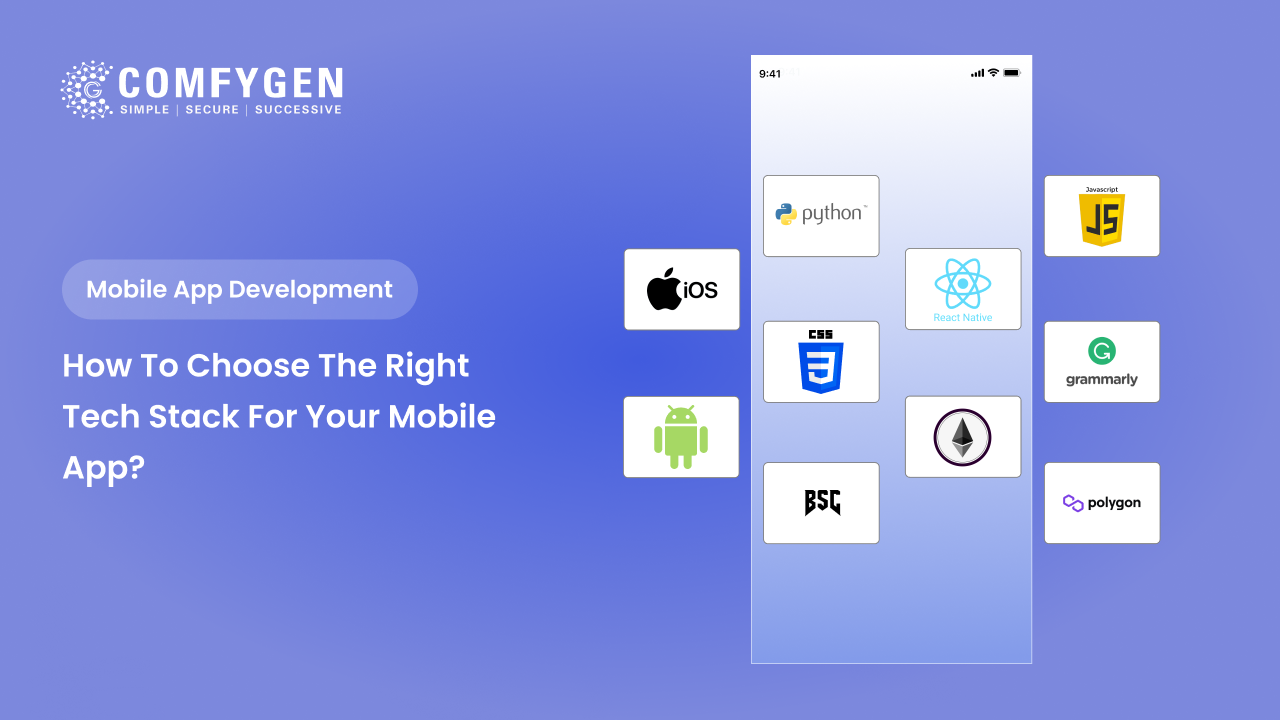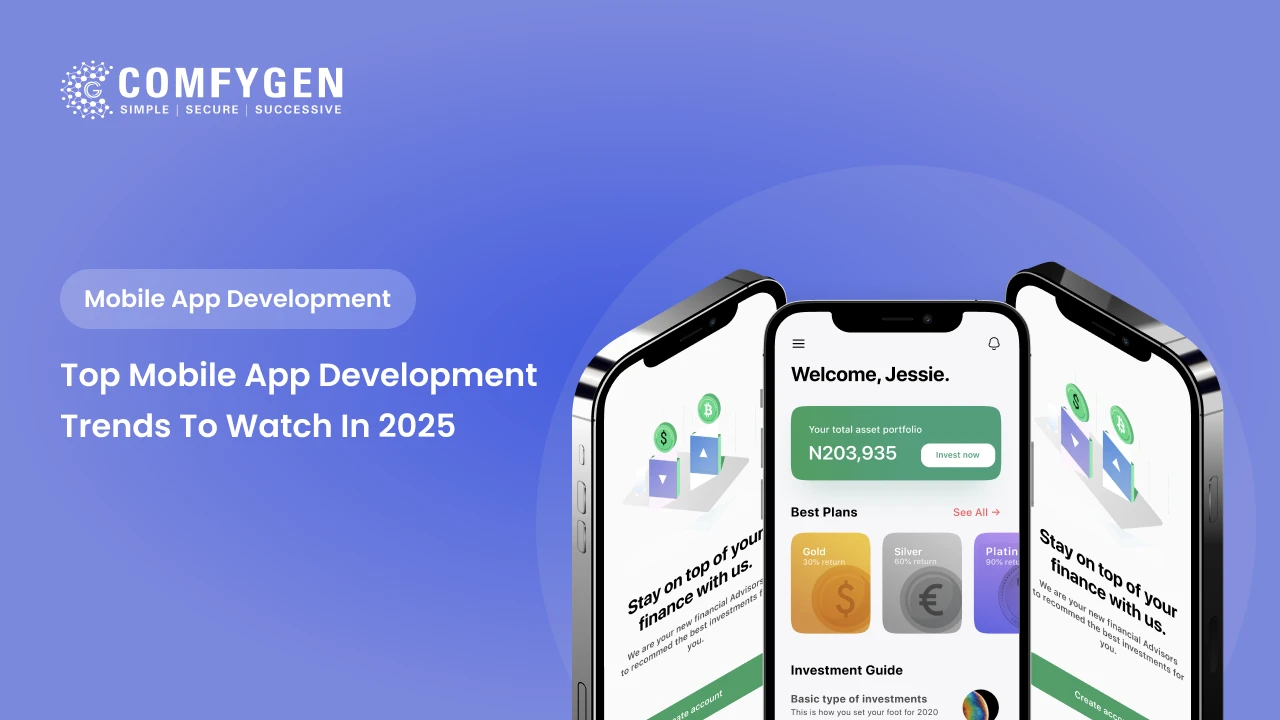A Comprehensive Guide from a Leading Hyperledger Blockchain Development Company
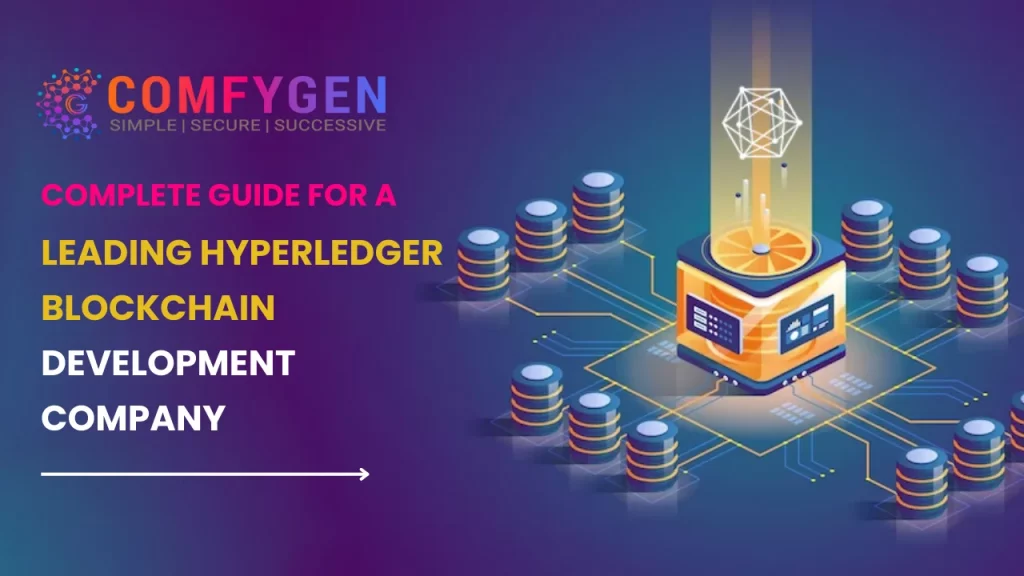
Hyperledger Blockchain is a leading blockchain development company that presents a comprehensive guide to navigating the intricacies of this powerful blockchain development framework. Experienced blockchain developers lie in leveraging Hyperledger’s diverse blockchain development projects, including Hyperledger Fabric and Sawtooth, to create blockchain development solutions for enterprises seeking strong blockchain application development services. From conceptualization to deployment, the team ensures a seamless blockchain development process, emphasizing scalability, security, and difference. Guide clients in working with Hyperledger’s collaborative ecosystem, enabling them to make informed decisions on blockchain development framework selection. With a client-centric approach, our blockchain development company facilitates the integration of Hyperledger Blockchain development technologies, empowering businesses to unlock the full potential of decentralized, transparent, and efficient systems.
Unveiling Hyperledger: The Foundations of Blockchain Development
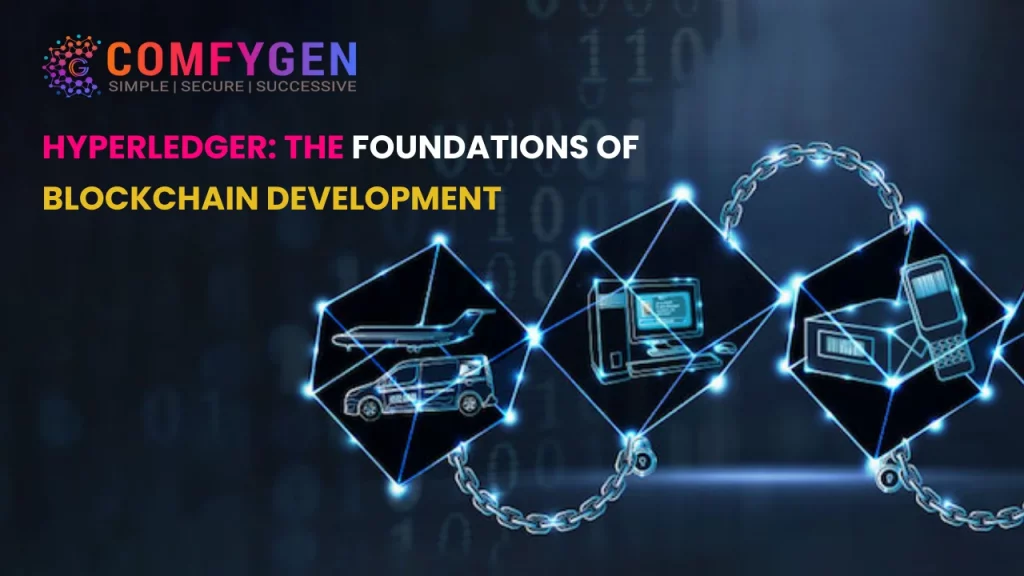
Hyperledger stands as a starting point in the blockchain development field, providing a strong foundation for developing distributed ledger blockchain technologies. Blockchain developed under the Linux Foundation, Hyperledger blockchain development is not a single blockchain but rather a collaborative effort encompassing a suite of open-source blockchain development frameworks, process and tools. This collaborative approach fosters innovation and standardization within the blockchain development space.
Hyperledger development aims to streamline and enhance the blockchain development of enterprise-grade blockchain development services. One of its most notable blockchain development projects, Hyperledger Development Fabric, empowers organizations to design and implement permissioned blockchains tailored to their specific needs. This ensures increased privacy, scalability, and modular flexibility, making it an ideal choice for businesses exploring blockchain applications.
Hyperledger Sawtooth, another key project, focuses on simplifying the development of distributed ledgers. It employs a unique consensus algorithm, Proof of Elapsed Time, ensuring a secure and efficient transaction validation blockchain development process. This diverse ecosystem of frameworks enables hire blockchain app developers to select the most suitable tools for their projects, fostering a dynamic and adaptable blockchain development environment.
In essence, Hyperledger stands as a central force propelling the evolution of blockchain development technology, offering a collaborative blockchain development platform that accelerates innovation and sets the stage for the future of decentralized applications in various blockchain development industries.
>>>Read More: How to Choose a Blockchain Platform for your Business<<<
Navigating Hyperledger Frameworks: A Comprehensive Overview
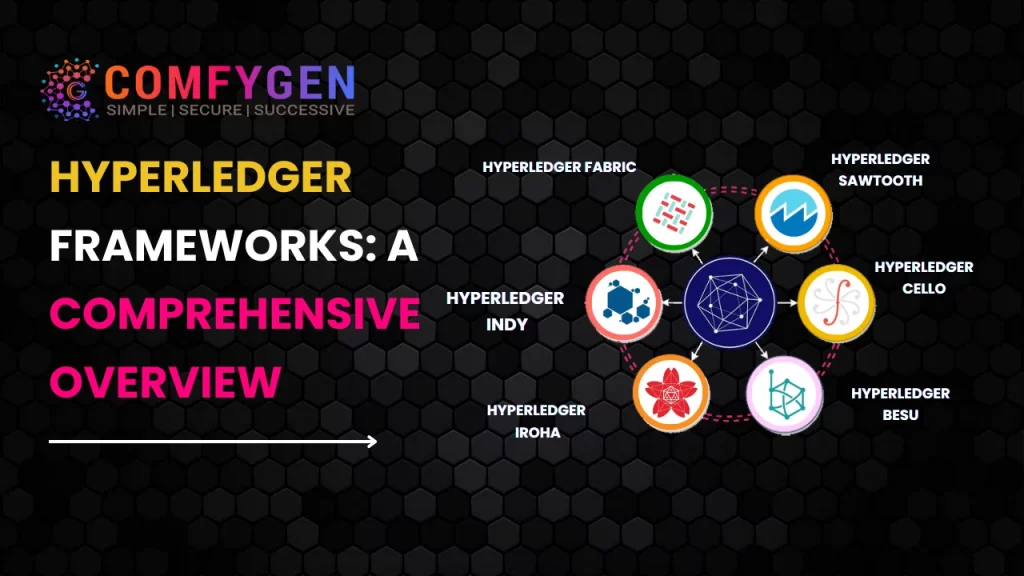
The dynamic blockchain development technology field and the Hyperledger design, hosted by the Linux Foundation, stand as a light of collaboration and invention. This comprehensive overview gives into important Hyperledger fabrics, illuminating their special attributes and benefits to the enterprise blockchain development geography.
Hyperledger Development Fabric, famed for its permissioned blockchain development structure, thrives on modularity and scalability. With fine-granulated access controls and support for private deals, it has set up a niche in sectors like force chain operation and finance. Hyperledger development emphasizes simplicity and scalability, offers resemblant sale processing, and supports different smart contracts, making it adaptable for different mobile operations, from force chain provenance to digital identity operation.
For decentralized identity blockchain development results, there is Hyperledger development, prioritizing stoner sequestration through decentralized identifiers and empirical credentials. Incipiently, Hyperledger blockchain development company, with Ethereum comity, bridges the gap between private and public blockchain development networks, making it a favored choice for enterprises seeking to harness Ethereum’s capabilities.
This overview serves as a compass through the Hyperledger development ecosystem, showcasing the versatility and strategic places these blockchain development fabrics play in shaping the future of blockchain operations for businesses worldwide.
Setting the Stage: Building Your Hyperledger Development Environment
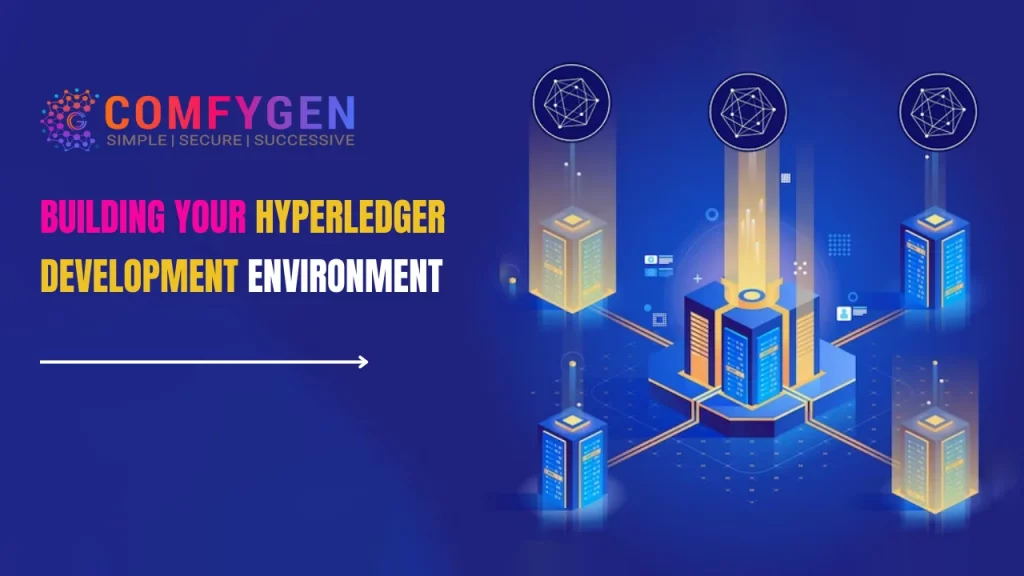
Setting up your Hyperledger blockchain development environment involves some steps to ensure a smooth and efficient blockchain development process. Here are some topics to help you build your Hyperledger development environment:
- Understanding Hyperledger:
That’s the important part of having a solid understanding of Hyperledger development. Hyperledger development is an open-source collaborative effort to advance cross-industry blockchain development technologies. Familiarize yourself with the different Hyperledger development projects to determine which one aligns with your blockchain development project requirements.
- System Requirements:
Ensure that your blockchain development machine meets the system requirements for running Hyperledger development projects. Different blockchain development projects may have changed specifications, so check the official documentation for specific details. Generally, Hyperledger development projects are compatible with major operating systems like Linux, macOS, and Windows.
- Installing Prerequisites:
Hyperledger development projects often have dependencies that need to be installed before setting up the actual blockchain development framework. Common necessary conditions include Docker, Docker Compose Node.js, npm, and the Go programming language. Follow the installation instructions provided in the Hyperledger development documentation for your chosen blockchain development project.
- Choosing a Hyperledger Project:
Choosing which Hyperledger development project you want to work with depends on your use case and requirements. Hyperledger Fabric is a popular choice for building enterprise-level Take on Effective Blockchain App Development Company, while Hyperledger Sawtooth provides a modular and flexible blockchain development framework. The development project you choose will influence the specific blockchain development tools and libraries you will be working with.
- Setting up Hyperledger Fabric:
If you’ve chosen Hyperledger Fabric, follow these steps:
- Download the Hyperledger Fabric samples and binaries.
- Set up your blockchain network configuration using Docker Compose.
- Generate cryptographic material for your network.
- Start your Hyperledger Fabric network.
- Configuring Hyperledger Sawtooth:
For Hyperledger Sawtooth, the setup involves:
- Installing the Sawtooth software development kit.
- Configuring a Sawtooth network with Docker Compose.
- Developing and deploying your Sawtooth smart contracts.
- Writing smart contracts:
Regardless of the chosen Hyperledger development project, understanding smart contract development is essential. Use programming languages like JavaScript, Node.js, React.js, or Solidity to write smart contracts that define the business logic of your blockchain application.
- Integrating Development Tools:
Integrate blockchain development tools and frameworks into your Integrated Development Environment for a more streamlined blockchain development experience. Popular choices include VSCode, Atom, and Eclipse, with extensions or plugins that support Hyperledger development.
- Joining the Hyperledger Community:
The Hyperledger development community has become an active part of it. Engage with forums, mailing lists, and social media channels. The community can provide valuable support, insights, and collaborative opportunities.
- Testing and Deployment:
Once your blockchain development environment is set up, thoroughly test your blockchain application. Consider using Hyperledger Caliper for performance benchmarking. Once you are satisfied with the testing phase, deploy your mobile application developement to the desired network.
- Documentation and Best Practices:
Document your blockchain development process and accept the best practices outlined in the Hyperledger documentation. This ensures that your code is maintainable, scalable, and follows blockchain development industry standards.
Smart Contract Mastery: Developing with Hyperledger
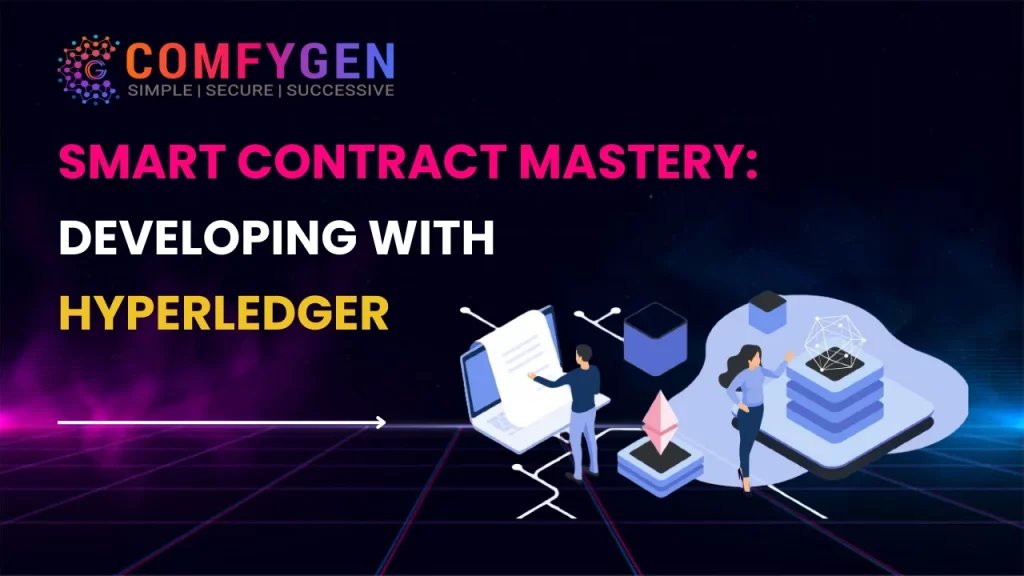
Developing smart contracts with Hyperledger involves using various blockchain development tools and frameworks within the Hyperledger development ecosystem. Here are some steps to help you master smart contract development with Hyperledger:
- Understand Hyperledger Frameworks:
Hyperledger development offers multiple frameworks for different use cases, like Fabric, Sawtooth, Indy, and Besu. Understand the strengths and use cases of each framework to choose the most suitable one for your hyperledger development project.
- Setup the Development Environment:
Install and configure the necessary Hyperledger development tools, including Docker and Hyperledger Composer. Set up a local development environment to test and deploy your smart contracts.
- Learn Hyperledger Fabric:
Hyperledger Fabric is the most widely used framework. Understand its architecture, components, and the roles of entities like peers, orderers, and clients. Master the chaincode development process in Fabric.
- Chaincode Development:
Chaincode is the term used for smart contract development in Hyperledger Fabric. Learn to write chain code using programming languages like Go or Node.js. Understand how to deploy, upgrade, and interact with chaincode on the Fabric network.
- Smart Contract Lifecycle:
Familiarize yourself with the smart contract lifecycle, including installation, instantiation, invocation, and upgrading. Learn how to manage the versioning of smart contracts to ensure seamless updates.
- Permissioned Blockchain Concepts:
Hyperledger development is designed for permissioned blockchains, where participants have defined roles and permissions. Understand how to manage identities, access control, and membership services within a Hyperledger development network.
- Interoperability and Integration:
Explore methods for integrating Hyperledger with external systems and other blockchain networks. Understand the importance of interoperability and how to implement it in your smart contract development design.
- Security Best Practices:
Security is compulsory in blockchain development. Learn and implement security best practices, including secure coding, identity management, and encryption. Understand potential weaknesses and how to mitigate them.
- Testing and Debugging:
Master the art of testing smart contracts. Develop strong unit tests, integration tests, and end-to-end tests to ensure the reliability and functionality of your smart contracts. Use debugging tools to identify and fix issues.
- Explore Hyperledger Tools:
Hyperledger provides a suite of tools that complement smart contract development. Explore tools like Hyperledger Explorer for network visualization, Caliper for benchmarking, and Cello for blockchain lifecycle management.
- Documentation and Community Involvement:
Stay updated with the latest documentation and actively engage with the Hyperledger development community. Participate in forums, attend meetups, and contribute to open-source blockchain development to enhance your understanding and skills.
- Continuous Learning:
Blockchain technology is evolving rapidly. Stay informed about the latest developments, updates, and best practices in the Hyperledger development ecosystem. Continuously enhance your skills to stay at the forefront of smart contract development.
Read More: Smart Contracts and Blockchain: A Powerful Combination for Business Applications
Building Blocks: Configuring and Optimizing Your Hyperledger Network
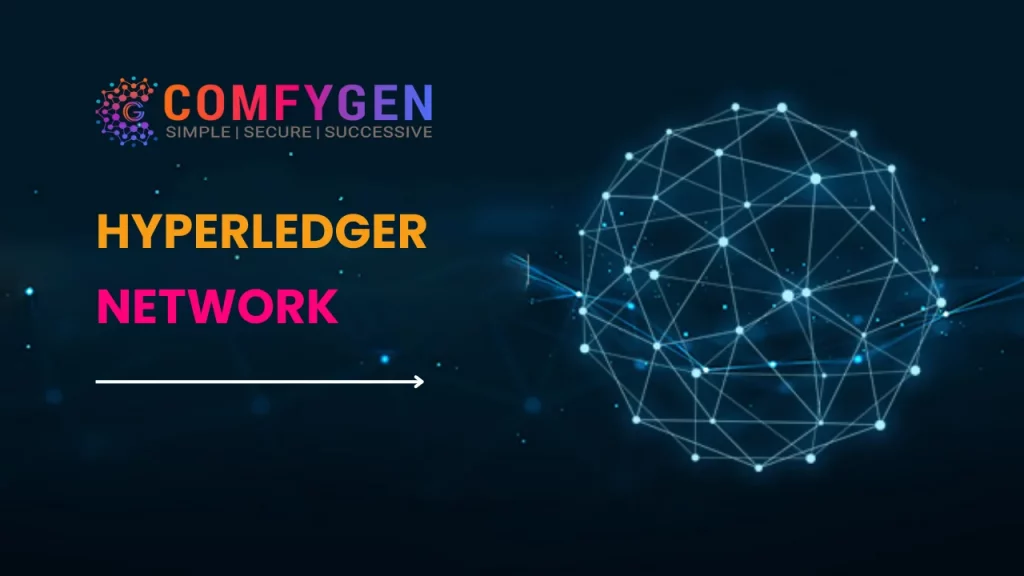
Configuring and optimizing a Hyperledger development network involves strategically designing its building blocks to ensure a strong and efficient blockchain ecosystem. The first important step is meticulous network topology design, tailoring the structure to meet scalability, fault tolerance, and segmentation needs. Selecting an appropriate consensus mechanism, like Practical Byzantine Fault Tolerance or Raft, aligns with the desired network goals.
Node configuration is imperative, as is defining roles and establishing secure communication through cryptographic materials. Channels facilitating private communication require careful configuration with considerations for data privacy and access control. Implementing hard identity and access management policies further strengthens the blockchain network’s security.
Cryptography plays a central role in securing transactions and communications. Configuring cryptographic algorithms and encryption standards, along with regular updates, safeguards data integrity and confidentiality. Peers and orderers demand meticulous configuration, balancing resource utilization, and performance optimization.
Database optimization involves tailoring configurations based on the chosen database technology, ensuring efficient storage and retrieval. Comprehensive monitoring and logging, utilizing tools like Prometheus and Grafana, track network health. A well-thought-out strategy for blockchain network upgrades, coupled with thorough documentation and training sessions, completes the blockchain development process, empowering administrators and developers to manage, troubleshoot, and elevate the Hyperledger development network’s functionality.
The Consensus Quest: Exploring Ledger’s Consensus Mechanisms
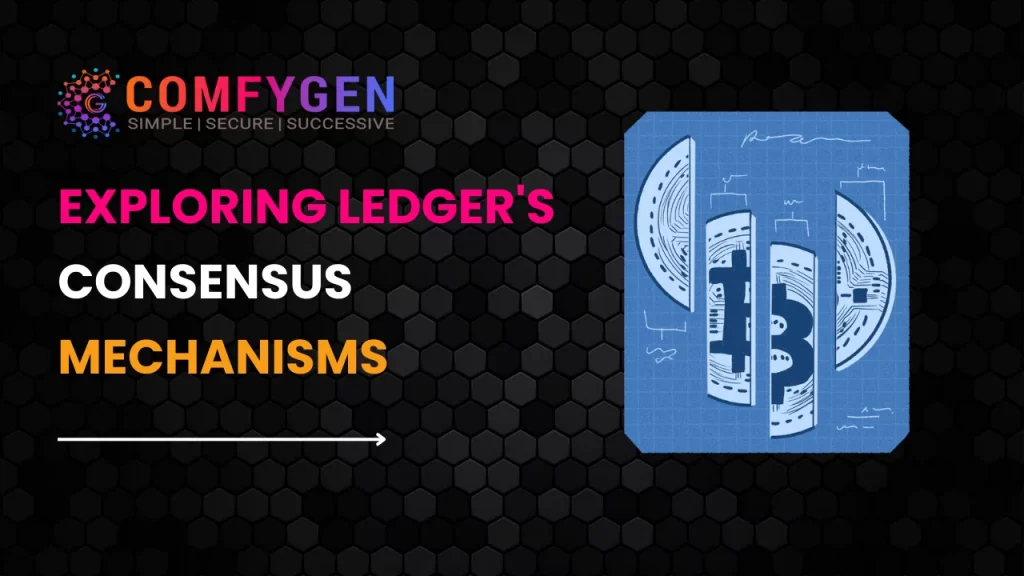
Starting the consensus quest involves delving into the intricate world of blockchain technology and exploring Ledger’s diverse consensus mechanisms. A consensus mechanism is the bedrock of a distributed ledger, ensuring that all participants agree on the state of the blockchain. Let’s unravel the nuances of Ledger’s consensus mechanisms:
Proof of Work (PoW):
Proof of Work, the pioneering consensus mechanism, demands participants solve complex mathematical puzzles to validate transactions and create new blocks. This blockchain development process requires significant computational power, securing the network through the sheer difficulty of puzzle-solving.
Proof of Stake (PoS):
Proof of Stake shifts the paradigm by selecting validators based on the amount of cryptocurrency they hold and are willing to “stake” as collateral. This mechanism enhances efficiency, reduces energy consumption, and aligns incentives with the network’s security.
Delegated Proof of Stake (DPoS):
Delegated Proof of Stake introduces a governance layer where coin holders vote to elect a set number of delegates who validate transactions and produce blocks. This streamlined approach enhances scalability and speeds up transaction processing.
Proof of Authority (PoA):
In Proof of Authority, consensus is established based on the reputation or authority of participants. Recognized entities or individuals with a proven track record are entrusted with block validation, streamlining the blockchain development process, and ensuring network stability.
Practical Byzantine Fault Tolerance (PBFT):
Practical Byzantine Fault Tolerance is characterized by nodes reaching consensus through a series of rounds of communication. This mechanism is highly efficient, requiring only two-thirds of nodes to be honest for the network to operate securely.
Raft Consensus:
Raft, a leader-based consensus algorithm, simplifies the blockchain development process by appointing a leader node responsible for managing consensus. This streamlines decision-making and ensures faster block creation.
Directed Acyclic Graphs (DAG):
Directed acyclic graph-based consensus mechanisms, like Tangle in Ledger’s case, employ a structure where each transaction verifies two previous transactions. This asynchronous approach enhances scalability and eliminates the need for miners.
Hybrid Consensus:
Some ledgers opt for hybrid consensus mechanisms, combining elements of multiple approaches to leverage their respective strengths. This fusion aims to strike a balance between security, scalability, and decentralization.
8 Data Dynamics: Managing and Structuring Data in Hyperledger Blockchain
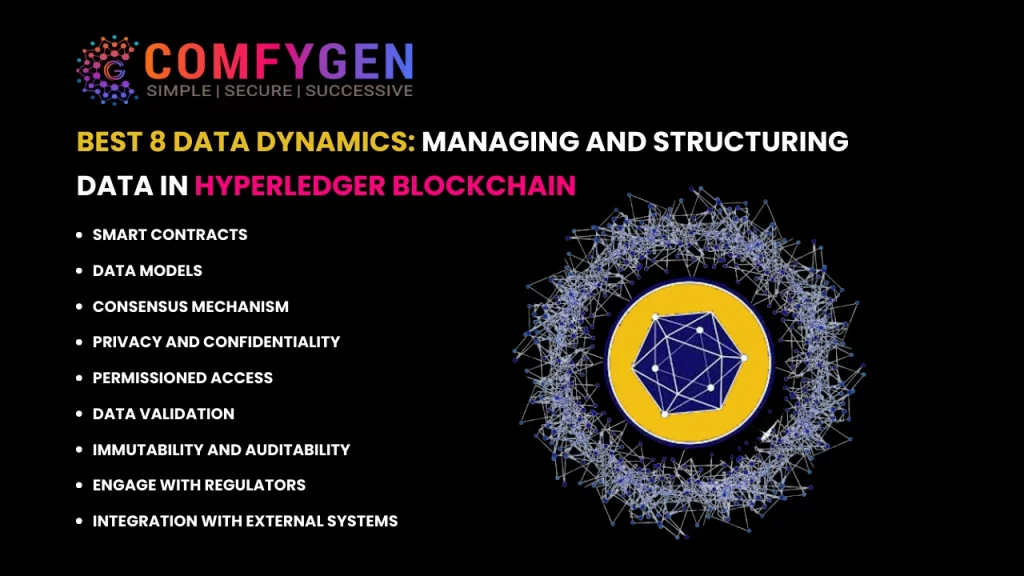
Managing and structuring data within a Hyperledger blockchain involves a careful orchestration of various data dynamics to ensure efficiency, security, and compatibility with the decentralized nature of the blockchain network. Here are eight important data dynamics to consider in the context of Hyperledger development:
Immutable Ledger:
Hyperledger blockchains maintain an immutable ledger, meaning that once data is recorded in a block, it cannot be altered or deleted. This characteristic ensures the integrity of historical transactions and enhances the trustworthiness of the entire network.
Smart Contracts and Chaincode:
Smart contracts implemented through Chaincode in Hyperledger Fabric, automate the execution of predefined actions when specific conditions are met. These smart contracts define the rules governing data interactions and contribute to the overall structure of blockchain development.
Private Data and Channels:
Hyperledger allows for the creation of private channels, restricting data visibility to specified network participants. This feature enables confidential transactions, particularly relevant in business scenarios where sensitive data must be shared selectively.
Consensus Data Sharing:
Achieving consensus on shared data is fundamental to the blockchain. Hyperledger’s consensus algorithms ensure that all nodes in the blockchain network agree on the validity of transactions, maintaining a consistent view of the distributed ledger.
Identity Management:
Effective identity management is important for data integrity. Hyperledger employs cryptographic techniques to secure identities and control access to the blockchain. This ensures that only authorized participants can submit transactions and access specific data.
Data privacy and confidentiality:
Hyperledger development frameworks, like Fabric, provide mechanisms for data privacy and confidentiality. Encryption techniques safeguard the contents of transactions and ensure that sensitive information is only accessible to authorized parties.
Data Storage and Querying:
Hyperledger blockchains store data across a network of nodes. Efficient data storage and querying mechanisms are essential for quick access to historical transactions. Hyperledger provides tools for querying and analyzing blockchain data.
Off-Chain Data and Oracles:
Hyperledger networks can leverage off-chain data sources or oracles to bring external data onto the blockchain. Off-chain data and Oracles are particularly useful for smart contract development that requires real-world information. Ensuring the purity and reliability of off-chain data is important for the integrity of the entire system.
Safe and Sound: Security Best Practices for Hyperledger Development
Starting the security of Hyperledger development is compulsory to protect sensitive data and maintain the integrity of blockchain networks. Here are essential security best practices for Hyperledger development:
Cryptography Implementation:
Employ strong cryptographic algorithms to secure transactions, communications, and identities within the Hyperledger development network. Regularly update cryptographic libraries and configurations to stay resilient against evolving threats.
Identity and Access Management:
Implement a strong identity management system to control access to the Hyperledger development network. Utilize Hyperledger’s membership services to manage user identities, roles, and permissions, ensuring that only authorized participants can interact with the blockchain development.
Secure smart contract coding:
Accept secure coding practices when developing smart contracts. Avoid weaknesses like reentrancy attacks and ensure input validation to prevent malicious activities. Regularly audit and test smart contracts for potential security flaws.
Regular Code Audits and Reviews:
Conduct regular code audits and reviews to identify and address security weakness. Collaborate with a diverse team to bring different perspectives to the security assessment blockchain development process. Automated tools can complement manual reviews for a comprehensive analysis.
Secure network configuration:
Securely configure nodes, peers, and orders within the Hyperledger network. Utilize firewalls, implement secure communication protocols, and restrict unnecessary ports to minimize the attack surface. Regularly update and patch all network components.
Secure Channels and Private Data:
Leverage Hyperledger’s features for private channels and data to restrict access to sensitive information. Ensure that confidential transactions are visible only to authorized participants, enhancing the privacy and security of business transactions.
Continuous Monitoring and Logging:
Implement comprehensive monitoring tools to detect and respond to security incidents promptly. Log and analyze network activities to identify anomalies or potential security threats. Regularly review logs to maintain a proactive security posture.
Regular Software Updates:
Keep all Hyperledger components and dependencies up-to-date by applying security patches and updates. Regularly check for the latest releases and security advisories from the Hyperledger community and other relevant sources.
Multi-Signature Approvals:
Implement multi-signature approvals for critical actions within the blockchain network, especially for administrative or configuration changes. This adds an extra layer of security by requiring approval from multiple authorized parties.
Disaster Recovery and Backup:
Develop and regularly test disaster recovery plans to ensure a quick response to security incidents or system failures. Regularly backup critical data and configurations to facilitate rapid recovery in the event of data loss or corruption.
Education and Training:
Educate development and network administration teams about the latest security threats, best practices, and updates within the Hyperledger development ecosystem. Promote a culture of security awareness and continuous learning to stay ahead of potential risks.
Coding Confidence: Testing and Debugging Strategies for Hyperledger
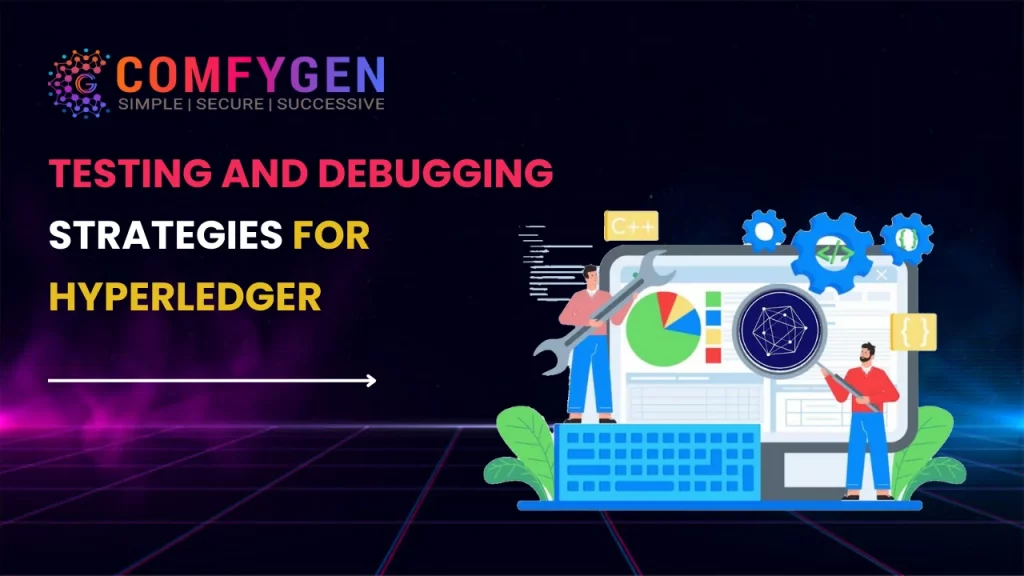
Building coding confidence in Hyperledger development involves robust testing and debugging strategies to ensure the reliability and functionality of blockchain applications. Here are key practices to enhance coding confidence in the Hyperledger environment:
Unit Testing:
Implement thorough unit testing for individual components of your Hyperledger application, including smart contracts, to verify their correctness in isolation. Use testing frameworks like Mocha or Go testing tools to automate the testing process.
Integration Testing:
Conduct integration testing to ensure that different components of the Hyperledger network interact seamlessly. Test the integration of smart contracts, peer nodes, and other network elements to identify and address any compatibility issues.
End-to-End Testing:
Perform end-to-end testing to validate the entire workflow of your Hyperledger application. Simulate real-world scenarios to ensure that all components collaborate effectively and transactions are processed accurately from end to end.
Mocking External Dependencies:
Use mock objects or simulated environments to mimic external dependencies, like external systems or oracles, during testing. This allows for controlled testing scenarios and helps identify potential issues related to external interactions.
Code Coverage Analysis:
Employ code coverage analysis tools to assess the percentage of code that your tests cover. Aim for comprehensive coverage to minimize the risk of undetected bugs. Address areas with lower coverage to enhance the reliability of your codebase.
Continuous Integration and Continuous Deployment:
Integrate testing into your Continuous Integration and Continuous Deployment pipeline to automate the testing blockchain development process whenever changes are made to the codebase. This ensures that new code additions do not introduce regressions and helps maintain a high level of code quality.
Peer Node Simulation:
Simulate a network of peer nodes during testing to emulate the behavior of a real Hyperledger development network. This aids in identifying issues related to consensus, data propagation, and peer interactions before deploying to the actual network.
Scenario-Based Testing:
Conduct scenario-based testing to evaluate how your Hyperledger development application handles specific use cases and edge cases. This includes testing for unusual or extreme conditions to ensure the strength of the system.
Debugging Tools:
Utilize debugging tools provided by Hyperledger development frameworks, like Hyperledger Fabric Explorer, to monitor and troubleshoot your blockchain development network. These debugging tools help identify issues with transactions, smart contracts, and network nodes.
Logging and Auditing:
Implement comprehensive logging mechanisms within your Hyperledger development application to record relevant information about transactions, errors, and system events. This facilitates post-mortem analysis and helps in identifying and resolving issues efficiently.
Collaborative Code Reviews:
Conduct regular code reviews with team members to leverage collective expertise and identify potential issues early in the blockchain development process. Encourage open communication and knowledge sharing to enhance the overall quality of the code.
Beyond the Horizon: Deploying Hyperledger Applications
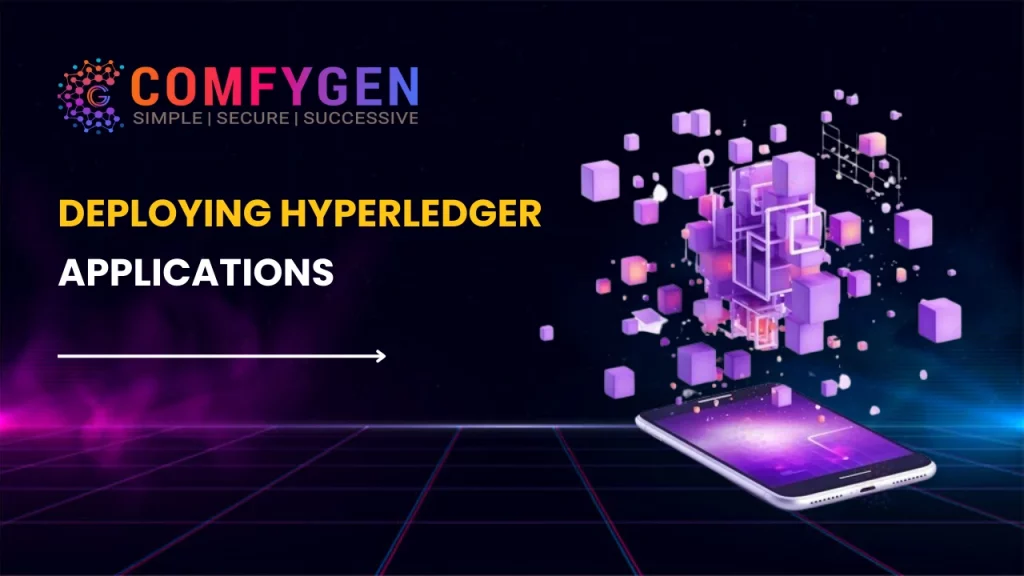
Deploying Hyperledger applications marks the culmination of development efforts, transitioning blockchain development solutions from local environments to production. Here are given to navigating the blockchain deployment process and venturing beyond the development horizon:
Infrastructure Planning:
Begin by carefully planning the infrastructure for your Hyperledger deployment. Consider factors like network topology, hardware requirements, and scalability needs. Ensure that the chosen infrastructure aligns with the performance and security demands of your application.
Choose the right framework:
Select the appropriate Hyperledger development framework based on your use case and business requirements. Hyperledger Fabric, Sawtooth, and Besu cater to different scenarios, so choose the one that best suits your application’s needs.
Secure Deployment Configuration:
Prioritize security in your deployment configuration. Utilize secure communication protocols, configure firewalls, and enforce access controls to safeguard against potential threats. Apply best practices for securing nodes, peers, and orderers within the deployed network.
Automated Deployment Scripts:
Develop automated deployment scripts to streamline the blockchain development process and ensure consistency. Tools like Ansible or Docker Compose can be instrumental in automating the deployment of Hyperledger components, reducing the chance of human error.
Network Bootstrapping:
Bootstrap the network by initializing the necessary components, including peers, orders, and channels. This involves setting up cryptographic materials, creating the genesis block, and configuring the initial state of the blockchain network.
Chaincode Installation and Instantiation:
Install and instantiate the smart contracts (Chaincode) on the peers within the deployed network. Verify that the chain code is correctly deployed and initialized, and ensure that it aligns with the business logic defined during development.
Identity and Membership Services:
Integrate identity and membership services into your deployment to manage user identities effectively. Ensure that only authorized participants can transact on the blockchain network by configuring and enforcing identity and access policies.
Channel Configuration:
Fine-tune channel configurations to match the requirements of your deployment. Adjust parameters related to data privacy, access control, and transaction ordering to align with your application’s specific use cases.
Load Testing:
Before deploying to a production environment, conduct thorough load testing to assess the network’s performance under various conditions. Identify potential bottlenecks and scalability issues, making necessary adjustments to optimize performance.
Monitoring and Maintenance:
Implement monitoring tools to keep track of the deployed Hyperledger network’s health and performance. Set up alerts for critical events and establish a routine maintenance schedule to apply updates and security patches.
Backup and Recovery:
Develop a strong backup and recovery strategy to safeguard against data loss or system failures. Regularly back up critical data and configurations and conduct drills to test the effectiveness of the recovery process.
Documentation and Training:
Document the deployment process comprehensively to aid administrators and other stakeholders. Provide training sessions to ensure that the blockchain development operations team is well-equipped to manage, monitor, and troubleshoot the deployed Hyperledger application effectively.
Fusion Forward: Integrating Hyperledger with Existing Systems
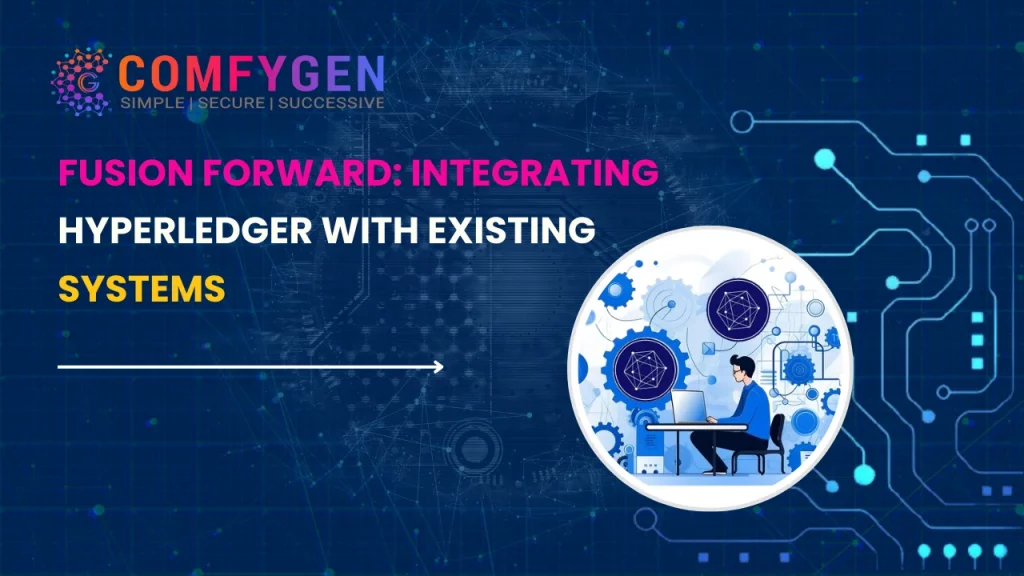
Integrating Hyperledger with existing systems is a central step toward realizing the full potential of blockchain development technology within an organization. Here are some points on how to seamlessly fuse Hyperledger with your existing systems:
Comprehensive System Analysis:
Begin by conducting a thorough analysis of your existing systems, and understanding their architecture, data formats, and communication protocols. Identify key touchpoints where blockchain integration can enhance operational efficiency, transparency, or security.
Define integration objectives:
Clearly define the objectives of integrating Hyperledger with existing systems. Whether it’s optimizing blockchain development processes, improving data traceability, or enhancing security, having well-defined objectives guides the integration strategy.
Choose the Right Hyperledger Framework:
Select the Hyperledger development framework that aligns with the integration goals. Hyperledger Fabric is versatile for enterprise use cases, Sawtooth provides modularity, and Besu is Ethereum-compatible. Choose based on your specific requirements and the existing blockchain technology stack.
Establish communication protocols:
Determine how Hyperledger will communicate with your existing systems. APIs, messaging queues, or direct integration methods can be employed based on the requirements and compatibility with the existing infrastructure.
Develop adapters or Middleware:
Build adapters or middleware components to facilitate seamless communication between Hyperledger and existing systems. These components act as bridges, translating data formats and ensuring a standardized flow of information.
Data Mapping and Transformation:
Address disparities in data structures by mapping and transforming data between Hyperledger and existing databases or systems. Ensure that the information exchanged is coherent and compatible to maintain data integrity.
Identity and Access Management Integration:
Integrate Hyperledger’s identity and access management features with existing authentication systems. This ensures a unified approach to user identity and access controls across the entire ecosystem.
Transaction Synchronization:
Implement mechanisms to synchronize transactions between Hyperledger and existing systems in real-time. This guarantees that updates are consistently reflected across the entire network, preventing discrepancies.
Test in Staging Environment:
Before deploying in a production environment, thoroughly test the integration in a staging environment. This helps identify and rectify any issues related to data consistency, communication, or performance.
Security Measures:
Strengthen security measures by applying encryption, access controls, and auditing features consistently across Hyperledger and existing systems. Regularly monitor and update security protocols to protect sensitive information.
Documentation for Maintenance:
Document the integration process comprehensively. This documentation should include configuration details, data flow diagrams, and troubleshooting guides. This aids in ongoing maintenance and future enhancements.
Continuous monitoring and optimization:
Implement monitoring tools to continuously track the performance of the integrated Hyperledger system. Regularly optimize the integration based on the evolving needs of the organization and emerging technologies.
User Training and Support:
Provide training to users and support teams to navigate the integrated ecosystem effectively. This includes educating stakeholders on new blockchain development processes, interfaces, and troubleshooting techniques.
Future Frontiers: Trends and Innovations Shaping Hyperledger Technology
The future frontiers of Hyperledger development technology are shaped by several compelling trends and innovations. One significant trajectory involves the evolution of interoperability standards, fostering collaboration between different blockchain development networks. Hyperledger’s commitment to cross-chain compatibility and seamless integration with other distributed ledger blockchain technologies positions it at the forefront of this movement. privacy-preserving blockchain development technologies, like zero-knowledge proofs and confidential transactions, are gaining prominence within the Hyperledger development ecosystem, allowing for secure and private transactions on the blockchain. As sustainability becomes a central concern, Hyperledger is anticipated to adopt more energy-efficient consensus mechanisms, aligning with global efforts towards eco-friendly blockchain development solutions. the rise of token development and DeFi applications development organisation within the Hyperledger landscape is indicative of blockchain technology’s adaptability to emerging financial paradigms. These trends collectively underscore Hyperledger’s resilience and adaptability, positioning it as a central player in the ongoing evolution of blockchain development technology across diverse blockchain development industry verticals.
Understanding Hyperledger: Harnessing Blockchain Evolution
Encapsulates the exploration and utilization of Hyperledger development, a strong and versatile blockchain development framework. Hyperledger hosted by the Linux Foundation, provides an open-source environment for developing enterprise-grade blockchain development solutions. This blockchain development technology serves as a foundation for businesses seeking secure, transparent, and efficient solutions for various blockchain development industries. The understanding of Hyperledger involves delving into its diverse blockchain development frameworks, like Fabric, Sawtooth, Indy, and Besu, each tailored to specific use cases. Harnessing the blockchain evolution with Hyperledger encompasses designing, deploying, and managing decentralized applications that streamline blockchain development processes, enhance trust, and provide new levels of efficiency. With features like smart contracts, permissioned blockchain development networks, and advanced consensus mechanisms, Hyperledger represents a powerful tool for organizations aiming to navigate the evolving landscape of blockchain development technology. The journey involves mastering its components, integrating with existing systems, and embracing innovations to stay at the forefront of decentralized blockchain development solutions, contributing to the broader evolution of the blockchain development ecosystem.
Decoding Key Features: Unleashing the Power of Hyperledger
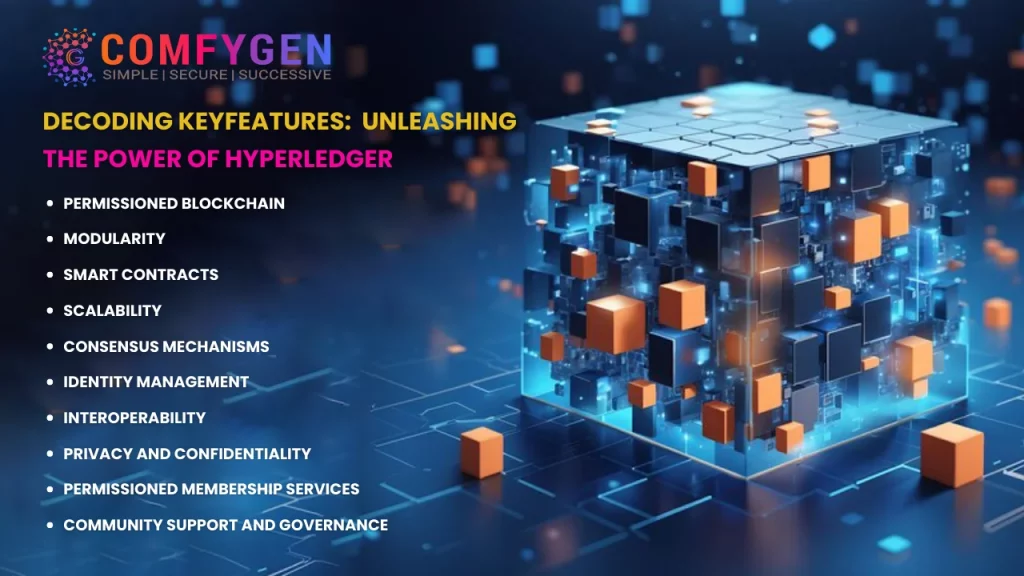
Here are some crucial features that contribute to unleashing the power of Hyperledger blockchain development, decrypted in a point-wise manner
Permissioned Blockchain
Hyperledger ensures a permissioned blockchain, where actors are authenticated and authorized, adding a subset of security and control over network access.
Smart Contracts with Chaincode
Hyperledger’s smart contracts, enforced through Chaincode, enable the robotization of business processes, increasing translucency, delicacy, and effectiveness in executing predefined conduct.
Pluggable Consensus Mechanisms
The blockchain development frame provides inflexibility with pluggable agreement mechanisms, allowing druggies to choose the most suitable algorithm for their specific use case, whether it’s Practical Intricate Fault Tolerance, Raft, or others.
sequestration and Confidentiality
Hyperledger addresses sequestration enterprises with features like private channels, ensuring that sensitive information is shared only among authorized actors and enhancing data confidentiality within the network.
Modularity and Extensibility
The modularity of Hyperledger allows for easy integration with systems and operations. It’s extensible, furnishing a frame that can acclimatize to different business requirements and blockchain technological conditions.
Permissioned Network Identity Management
Identity operation is a critical aspect, and Hyperledger incorporates permissioned network identity operation, meaning that only authorized realities can share in deals and execute defi smart contract development.
Consensus Flexibility
Hyperledger offers agreement inflexibility, allowing associations to choose the agreement algorithm that stylishly suits their conditions, be it practical, intricate fault tolerance, proof of work, or other agreement mechanisms.
Enterprise- Grade Security
Security is mandatory in Hyperledger development. It provides enterprise-grade security features, including cryptographic algorithms, access controls, and the capability to integrate with security protocols, securing the integrity of the blockchain network.
Interoperability and Integration
Hyperledger emphasizes interoperability, making it easier to integrate with existing systems and ensuring that blockchain development technology can seamlessly integrate with other technologies within an association.
Comprehensive Attestation
The blockchain development frame is supported by comprehensive attestation, making it accessible for inventors and associations to understand and apply Hyperledger. This ensures a smoother onboarding process for new adopters.
Active Community and Governance
Hyperledger benefits from an active and different community, fostering collaboration, knowledge-sharing, and nonstop enhancement. Its governance model ensures transparency and inclusivity in decision-making blockchain development processes.
Cross-Industry connection
Hyperledger’s versatility makes it applicable across colorful blockchain development diligence, including finance, the supply chain, healthcare, and more. Its rigidity ensures that associations can conform blockchain development results to meet specific blockchain development assiduity conditions.
Profiting from Progress: Examining the Benefits of Hyperledger in Blockchain

Profiting from progress, the benefits of integrating Hyperledger into blockchain development solutions are manifold. One of the key advantages lies in its modular and extensible architecture, allowing businesses to tailor the blockchain development framework to their specific needs. Hyperledger’s permissioned network ensures enhanced security and privacy, critical for blockchain development industries dealing with sensitive information. Smart contracts, facilitated through Chaincode, automate and streamline blockchain development processes, fostering efficiency and accuracy. With pluggable consensus mechanisms, organizations can select the most suitable algorithm for their use case, promoting flexibility. The blockchain development framework enterprise-grade security features, comprehensive documentation, and active community support provide a strong foundation for seamless integration and ongoing development. Hyperledger’s cross-industry applicability further positions it as a versatile blockchain development solution, offering tangible benefits across sectors like finance, supply chain, and healthcare. As businesses navigate the blockchain development landscape, adopting Hyperledger proves to be a strategic move towards maximizing efficiency, security, and innovation, ultimately leading to tangible blockchain development progress and profitability.
Industries Redefined: Unveiling the Impact of Hyperledger Blockchain Development
Blockchain development industries are undergoing a transformative shift with the advent of Hyperledger blockchain development, reshaping traditional paradigms and unlocking new possibilities. In finance, Hyperledger’s permissioned network and smart contracts streamline transactions, reducing processing times and enhancing security. Supply chain management witnesses a revolution as Hyperledger ensures transparent and traceable transactions, mitigating fraud and ensuring the authenticity of goods. Healthcare experiences a paradigm shift with secure and interoperable health records, facilitating seamless data sharing among stakeholders. The energy sector benefits from Hyperledger’s efficiency gains, optimizing resource management and enabling transparent energy transactions. Real estate transactions become more secure and efficient with smart contracts automating complex processes like property transfers. Government and public sectors find Hyperledger invaluable for transparent and accountable governance, ensuring the integrity of public records. Overall, Hyperledger’s impact extends across diverse blockchain development industries, fostering innovation, reducing operational costs, and redefining how businesses operate in the digital age.
>>>Read More: Blockchain Development Costs & Features – A Complete Guide
Ethereum vs. Hyperledger: Contrasts and Comparisons in Blockchain Realms
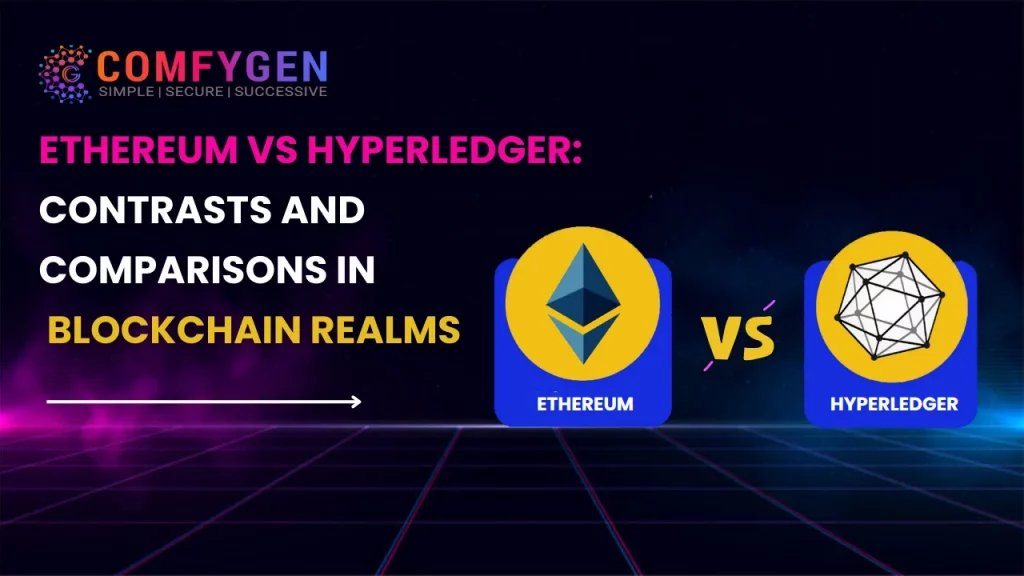
Here are a comparison between Ethereum blockchain development and Hyperledger blockchain development, highlighting the smart contrasts and comparisons in the blockchain field:
-
Design Philosophy:
- Ethereum: Ethereum is a public blockchain designed for DApps development and smart contracts. It operates on a Proof of Stake consensus mechanism, emphasizing openness and inclusivity.
- Hyperledger: Hyperledger hosted by the Linux Foundation, focuses on providing enterprise-grade, permissioned blockchain development solutions. It offers a modular and extensible framework catering to diverse business needs.
-
Consensus Mechanism:
- Ethereum: Ethereum currently operates on Proof of Stake consensus but is transitioning to Ethereum 2.0, a full PoS model. This shift aims to improve scalability and energy efficiency.
- Hyperledger: Hyperledger frameworks, like Fabric, support various consensus mechanisms like Practical Byzantine Fault Tolerance and Raft. The choice of consensus is flexible, allowing customization based on enterprise requirements.
-
Smart Contracts:
- Ethereum: Ethereum introduced the concept of smart contracts, self-executing smart contracts with coded business logic. It has a strong and widely used programming language called Solidity.
- Hyperledger: Hyperledger supports smart contracts through Chaincode. The programming languages for Chaincode include Go, JavaScript, and Java, offering flexibility in blockchain development.
-
Permissioning:
- Ethereum: Ethereum is permissionless, allowing anyone to participate and deploy smart contracts on the network. Public access is a core tenet of its design.
- Hyperledger: Hyperledger is designed for permissioned blockchain networks, requiring participants to be authenticated and authorized. This design suits enterprise use cases where controlled access is important.
-
Use Cases:
- Ethereum: Ethereum is widely used for DApps development, Initial Coin Offerings, and DeFi development applications.
- Hyperledger: Hyperledger finds applications in various blockchain development industries, including supply chain, finance, healthcare, and more, emphasizing enterprise solutions with a focus on privacy and scalability.
-
Tokenization:
- Ethereum: Ethereum is a popular blockchain development platform for creating and managing tokens, including fungible and NFT tokens.
- Hyperledger: Hyperledger supports tokenization but is often employed in enterprise scenarios where tokenized assets represent real-world assets like supply chain goods or financial instruments.
Read More: The Ultimate Guide for Real-World Asset Tokenization on Blockchain Development
-
Community and Governance:
- Ethereum: Ethereum has a large and diverse community with decentralized governance, often relying on community-driven proposals.
- Hyperledger: Hyperledger operates under the Linux Foundation, providing a structured governance model and collaborative blockchain development with a focus on enterprise needs.
-
Privacy:
- Ethereum: Ethereum transactions are public by default, but blockchain development solutions like zk-SNARKs are being explored to enhance privacy.
- Hyperledger: Hyperledger frameworks, especially Fabric, offer built-in privacy features, allowing for private channels and confidential transactions within the blockchain network.
Business Suitability: Evaluating if Hyperledger Blockchain Fits Large and Small Enterprises
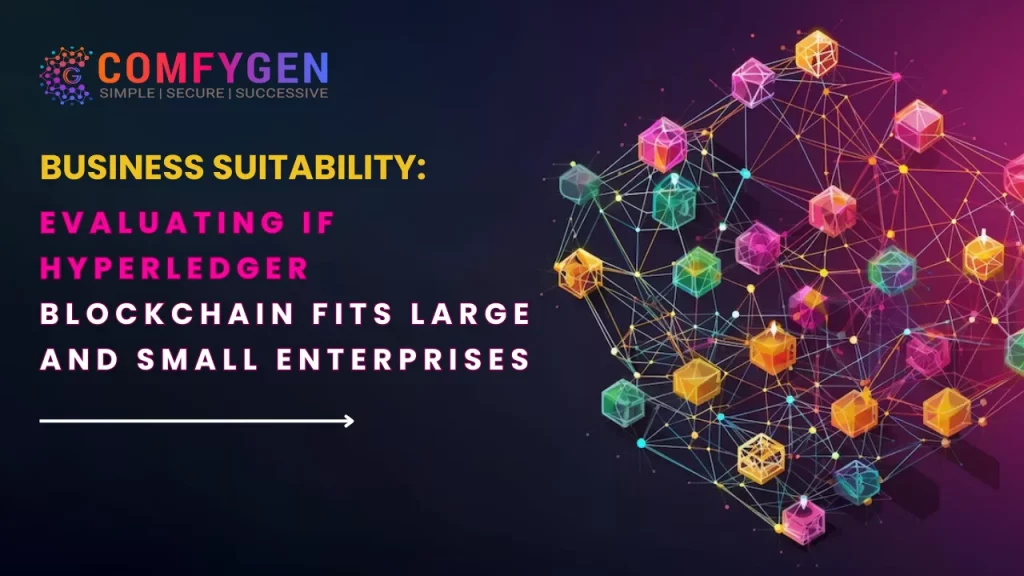
Evaluating the suitability of Hyperledger blockchain for both large and small enterprises involves considering various factors that align with the unique needs and capabilities of each business scale:
Large Enterprises:
- Scalability: Hyperledger Advantage: Hyperledger is designed to scale efficiently, making it suitable for large enterprises with complex business processes and high transaction volumes. Its modular architecture allows customization to meet diverse scalability requirements.
- Permissioned Networks: Hyperledger Advantage: Large enterprises often require permissioned networks to maintain control over access and data privacy. Hyperledger’s permissioned blockchain development framework ensures that only authorized participants engage in the network.
- Regulatory Compliance: Hyperledger Advantage: Compliance with regulatory standards is critical for large enterprises. Hyperledger provides a foundation for building blockchain development solutions that accept to industry-specific regulations, offering transparency and auditability.
- Integration with Existing Systems: Hyperledger Advantage: Integration is a key consideration for large enterprises with established IT infrastructures. Hyperledger’s modularity and compatibility enable seamless integration with existing systems, ensuring a smooth transition to blockchain development solutions.
- Consortium Governance: Hyperledger Advantage: Large enterprises often engage in consortiums or collaborations. Hyperledger’s governance models and consensus mechanisms support consortiums, allowing multiple stakeholders to participate in decision-making processes.
- Comprehensive Support and Documentation: Hyperledger Advantage: Large enterprises require strong support and documentation. Hyperledger, being a part of the Linux Foundation, benefits from an extensive community and comprehensive documentation, providing the necessary resources for large-scale implementations.
Small Enterprises:
- Cost-Effectiveness: Hyperledger Advantage: Small enterprises may have budget constraints. Hyperledger’s open-source nature minimizes licensing costs, and its modular design allows businesses to adopt specific components that align with their needs, optimizing costs.
- Scalability Options: Hyperledger Advantage: While scalability might be a consideration, Hyperledger’s modular architecture enables small enterprises to start with a tailored solution and scale as their operations expand. This flexibility accommodates gradual growth without overwhelming initial resources.
- Ease of Deployment and Maintenance: Hyperledger Advantage: Small enterprises may lack dedicated blockchain expertise. Hyperledger’s user-friendly features, comprehensive documentation, and modular structure contribute to ease of deployment and ongoing maintenance, reducing the need for extensive technical knowledge.
- Customization for Specific Needs: Hyperledger Advantage: Small enterprises often have specific requirements. Hyperledger’s modularity allows businesses to customize their blockchain development solutions, ensuring that the blockchain development technology aligns precisely with their unique operational needs.
- Community Support: Hyperledger Advantage: Small enterprises benefit from community support for issue resolution and knowledge sharing. Hyperledger’s active community fosters collaboration, providing a valuable resource for small businesses navigating the intricacies of blockchain implementation.
Conclusion
In conclusion, this comprehensive guide Blockchain Software Development from a leading Hyperledger blockchain development company serves as an invaluable resource for navigating the intricate landscape of blockchain development technology. Providing insights into Hyperledger development frameworks, consensus mechanisms, and real-world applications, it empowers businesses to harness the transformative potential of decentralized blockchain development solutions. With a focus on both large and small enterprises, the guide elucidates the nuanced considerations, advantages, and customization options that Hyperledger offers. As blockchain continues to redefine blockchain development industries, this guide stands as a beacon, equipping organizations with the knowledge needed to embark on a successful Hyperledger blockchain development journey.

Mr. Saddam Husen, (CTO)
Mr. Saddam Husen, CTO at Comfygen, is a renowned Blockchain expert and IT consultant with extensive experience in blockchain development, crypto wallets, DeFi, ICOs, and smart contracts. Passionate about digital transformation, he helps businesses harness blockchain technology’s potential, driving innovation and enhancing IT infrastructure for global success.
Based on Interest

Blockchain Consulting Services: Transforming Your Business with Cutting-Edge Blockchain Solutions
Introduction Blockchain technology is revolutionizing industries by providing secure, decentralized, and transparent solutions. As businesses across the world explore their potential,…




